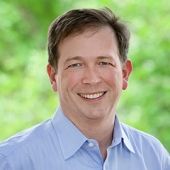Previous guest speakers include:
Dr. Condoleezza Rice
Irwin Jacobs, Qualcomm
Tom Mendoza, Net Apps
INDUSTRY AND COMPETITOR ANALYSIS
One of the most important determinants of firm performance is the attractiveness of the industry in which it competes. This session will provide practical tools for conducting an industry analysis and for evaluating a firm's position in its industry.
DISCOVERING SUCCESSFUL BUSINESS MODELS
While successful business models are often discussed and examined for their value as a preplanned approach to business, the fact is that most successful business models are actually discovered as the result of an iterative process conducted over time. We will review the three essential ways in which successful business models are discovered: through exploration into new possibilities, through improved exploitation of what we already know, and by harnessing competition as a source of continued innovation.
DECISION POWER AND OWNERSHIP: ORGANIZING ACTIVITIES INSIDE AND OUTSIDE THE FIRM
We will study the economic principles governing optimal allocation of decision power within a firm as well as outsourcing activities and vertical integration issues. We will discuss a variety of ways in which incentives, monitoring, and asymmetric information interact and which organizational method is optimal for each setting.
LEADERSHIP IN CRISIS MANAGEMENT
What should management do when a crisis focuses the harsh spotlight of public opinion on their organization? Whether it results from a firm's own missteps (think BP) or from strategic activism or media action (think Greenpeace), crisis is increasingly on the agenda for today's executives. In this session we will explore the skills and organizational structures required to prepare for, and productively manage, a crisis to avoid bringing lasting damage to a firm's reputation.
ORGANIZING FOR IMPROVED PERFORMANCE
This session will introduce a broad range of themes in organizational design. Four main aspects of organization will be emphasized—people, architecture, routines, and culture. While some are more easily influenced than others, all four can be shaped by the leaders of the firm.
MANAGING ORGANIZATIONAL CULTURE
We will introduce a framework for understanding the concept of "organizational culture" that you can use to diagnose and shape the culture in your own organizations. Relying on exemplary cases from several innovative firms, we will highlight strategies aimed at creating and
reinforcing the desired culture as a way to advance your firm's overarching business goals.
INNOVATION AND COMPETITION
To sustain a competitive advantage, many of today's firms must compete in a global industry marked by rapid technological innovation that continuously changes the competitive landscape. In this session you will learn a framework that will help you identify the organizational challenges that need to be tackled in order to compete effectively in high-velocity industries and the business policies that can improve a firm's performance in these circumstances.
STRATEGY BEYOND MARKETS
For a company to achieve superior overall performance, its strategy beyond markets must be integrated with its market strategy. This series of sessions considers firms' strategic interactions with important constituents, organizations, and institutions outside of markets. Topics of discussion will include boycotts, legislation, intellectual property enforcement, all of which substantially impact firms' performance and profitability.









